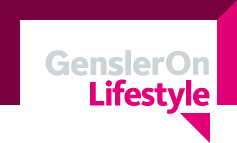When Does LED Work for You?
 Ben Callam
Ben Callam Image © Gensler/Jasper Sanidad.
This article expands on ideas presented in the 23rd edition of Gensler’s Dialogue magazine, which explores the intersection of cities, brands, and consumers. Click here to view Dialogue 23 online.
The LED fixture industry is one of the fastest growing technologies that currently affects renovation and design projects undertaken by businesses and other organizations. But any organization considering LED for its building(s) has many questions to address: How do you choose a fixture? When is it appropriate to abandon older technologies? Halide, fluorescent, or incandescent? Are they worth it?
Gensler recently finished a net-zero energy bank for PNC. The building uses LED fixtures for everything from general lighting to signage to the bezel that surrounds the ATM. Working on this project taught me an incredible amount about LEDs, and I thought it would be helpful to write it all down in one place and hopefully shed some light (sorry) on what can otherwise be an overwhelming technology.
First, let’s get something straight: LED fixtures are not new. They came into existence in the 1960s, but you’re reading about them today because the technology has matured only in the last 10 or so years.
LEDs use less energy than most traditional fixtures. This saves businesses money on energy costs and helps the environment by reducing the consumption of natural resources. LEDs continue to get better year after year. This technology isn’t going away any time soon.
Here are some of LEDs positive characteristics:
- They have a very long life. They can last up to 100,000 hours, whereas incandescent lamps only last about 1,000 hours.
- Many modern LED fixtures have excellent color (better than fluorescent).
- They produce very little radiated heat and turn on/off instantly, with no warm up time.
- LEDs are easily controlled and most modern fixtures are dimmable.
- LEDs are increasingly recyclable and do not contain hazardous substances like mercury (found in compact fluorescents).
- They produce no UV light, which makes them great for display applications. One of the key questions people considering LED ask is: What is the ROI? When can I expect to make my money back?
To measure ROI, you must consider the life expectancy of each fixture, the schedule of use, and energy/fixture/labor costs. For example, switching halogen fixtures for LEDs will generally pay back in four years if they are on eight hours a day, power cost is less than 13c/kW, the LED replacement is less than $60, and the cost of labor is >$25 hours (this is a good rule of thumb).
Having a warranty is also important. Make sure whatever company you buy from has been in the LED fixture business for a while, and check the life expectancy of the fixture against the warranty period.
Invest in the whole system. An LED system has different parts that could be specified piecemeal, but piecemeal is not recommended. Instead, specify a system that includes a driver, LED, optics, and controls (if you have them) that have all been successfully tested together. If they haven’t been tested together, they may not work. Beware of contractor substitutions.
So that’s the quick and dirty. Keeping those points in mind will help you determine if LEDs are right for you. Of course, there is always a chance that your project will require special considerations that a blog post cannot answer, so let us know if we can help!
 |
Ben is an award-winning and published designer who combines his background in technology with a dedication to sustainability and design excellence. His projects push boundaries in design and delivery across all scales and practice areas, from commercial office buildings to retail experience design. He recently completed a net-zero energy branch bank for PNC Reality Services, a first for both companies. The building is currently pursuing LEED Platinum certification and is located in Fort Lauderdale, Florida. Contact him at benjamin_callam@gensler.com. |



Reader Comments